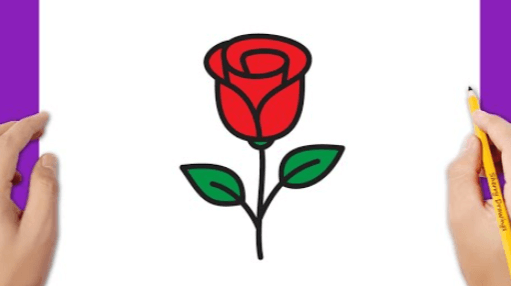Simple:5ami8atxuuw= Rose Drawing offers a fascinating intersection between botanical study and artistic expression. Understanding the intricacies of rose anatomy is essential for anyone looking to capture its beauty on paper. By employing the right tools and techniques, artists can elevate their work from mere sketches to evocative representations that resonate with viewers. However, the journey of mastering this skill involves more than just technique; it requires an appreciation for the subtleties of shading and color. What are the critical elements that can make or break a representation of this quintessential flower?
Understanding Rose Anatomy
Understanding the intricate anatomy of a rose is essential for both botanical study and artistic representation, as each component contributes significantly to its overall beauty and symbolism.
The rose structure showcases diverse petal types, from velvety to ruffled, while the stem anatomy reveals strength and support.
Additionally, the varying leaf shapes enhance visual appeal, enriching the rose’s allure and inspiring creativity in art.
Essential Drawing Tools
When embarking on the artistic journey of drawing roses, having the right tools is paramount to achieving both precision and expression.
Select varied pencil types—such as H for fine lines and B for rich shading—to enhance depth.
Complement these with paper textures that range from smooth to rough, allowing for diverse techniques and effects, ultimately elevating your rose drawing to an extraordinary level of artistry.
Step-by-Step Drawing Process
To effectively capture the delicate beauty of a rose, a systematic approach to the drawing process is essential.
Begin with basic sketch techniques to outline the flower’s form, emphasizing its contours. Gradually refine the details, allowing the petals to emerge.
Read Also Simple:4w83q2xii9q= Prokaryotic Cell

Tips for Enhancing Your Art
Regularly incorporating a variety of techniques can significantly enhance your artistic creations.
Mastering color theory allows you to evoke emotions and depth in your work, while effective shading techniques add dimension and realism.
Experimenting with different mediums and styles fosters creativity, encouraging a personal artistic voice.
Embrace the freedom to explore these elements, as they can transform your rose drawings into captivating masterpieces.
Conclusion
In conclusion, Simple:5ami8atxuuw= Rose Drawing transcends mere replication of nature, inviting artists to explore the delicate interplay of form and emotion. Mastery over rose anatomy and the use of essential tools culminates in a transformative creative process. As each stroke unveils layers of beauty, one must ponder: what deeper connections to nature and self can be discovered through the seemingly simple act of drawing a rose? Embracing this journey enriches both artistic skill and personal insight.
